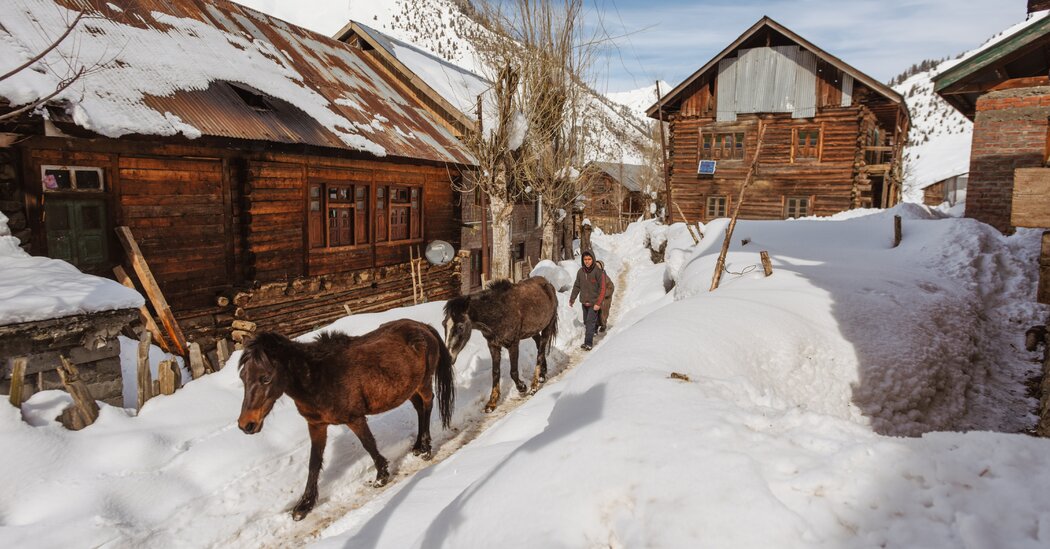As the chopper rose into the sky, my heart raced with excitement and a twinge of fear: This was my first helicopter ride. The man beside me glanced over and asked why I’d choose to visit the Gurez Valley now, when it had so little to offer. “Even the locals avoid it if they can,” he said.
I had no clear answer. All I knew was that the Himalayan valley, shrouded in snow and secrets in the far reaches of Indian-controlled Kashmir, held something important to me, and I was willing to brave the perils of winter to discover it.
During my childhood in the town of Baramulla, in northern Kashmir, I was surrounded by storytellers who conjured images of snowy Himalayan lands. Later, when I first saw images of Gurez, it seemed to embody the stories I’d heard, and I felt compelled to visit. My opportunity finally came in early 2022, as the pandemic began to wane.
Tucked away in the Himalayas along the ancient Silk Road, the Gurez Valley has historically been a part of Dardistan, the homeland of the Dardic people, which stretched as far west as Afghanistan. When the departing British colonial rulers partitioned India and Pakistan in 1947, the valley was split along the disputed border, known as the Line of Control, cutting its connection to its roots and placing Gurez — just barely — on the Kashmiri side administered by India.
Long forbidden to both foreign tourists and most Indian citizens, the valley — a heavily militarized frontier with razor-wire fences as a constant reminder of the ongoing conflict — recently opened its doors to tourists. Now, it bustles in the summer. But as winter descends, the area becomes inhospitable and isolated, with the only road in or out buried under up to 15 feet of snow.
When I landed in the central town of Dawar, my eyes were immediately drawn to the majestic, pyramid-shaped Habba Khatoon peak, standing tall behind a line of passengers awaiting a helicopter ride. I was warmly welcomed by Bashir Teroo, a cheerful man who worked as a medical assistant in the health department. Mr. Teroo, who later proved to be a trusted guide, gave me valuable insights into the daily struggles of the communities in Gurez.
I was stranded in Dawar for the first three days because of heavy snow. But on the fourth day I awoke to the hum of a helicopter — the signal of a sunny day. I called Mr. Teroo and asked him if he could take me to Chorwan, one of the last villages along the Line of Control. He warned of danger: Sunny days after heavy…
Click Here to Read the Full Original Article at NYT > Travel…
